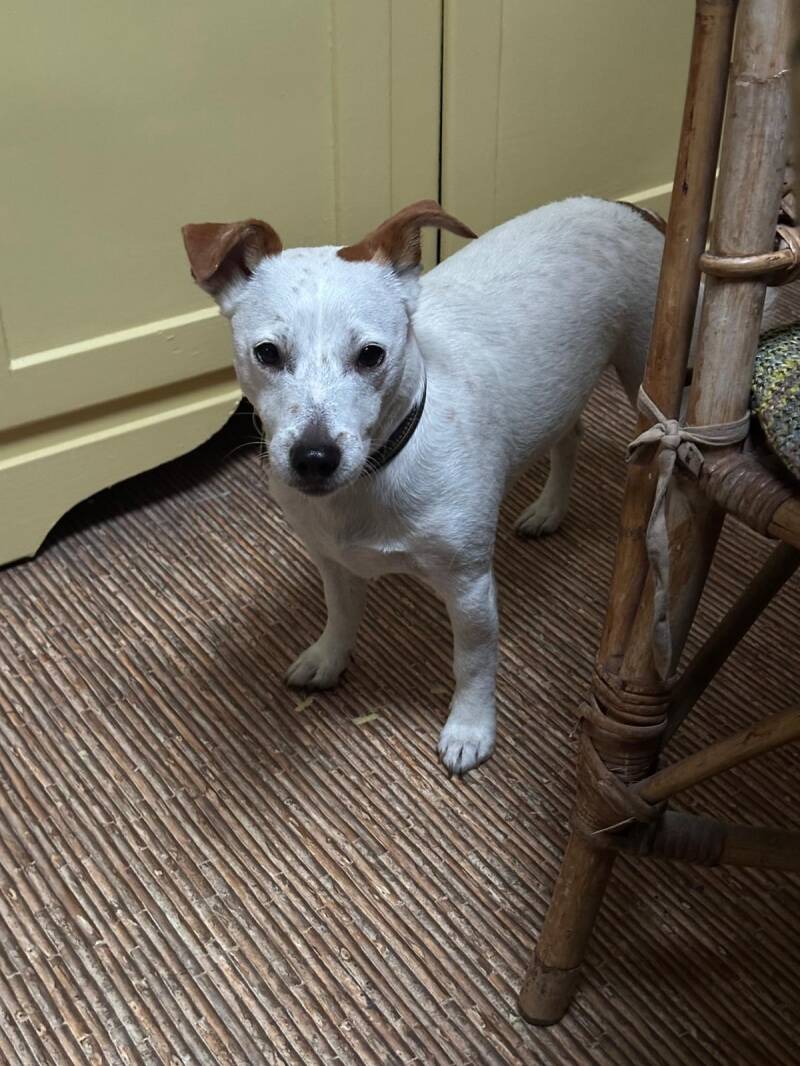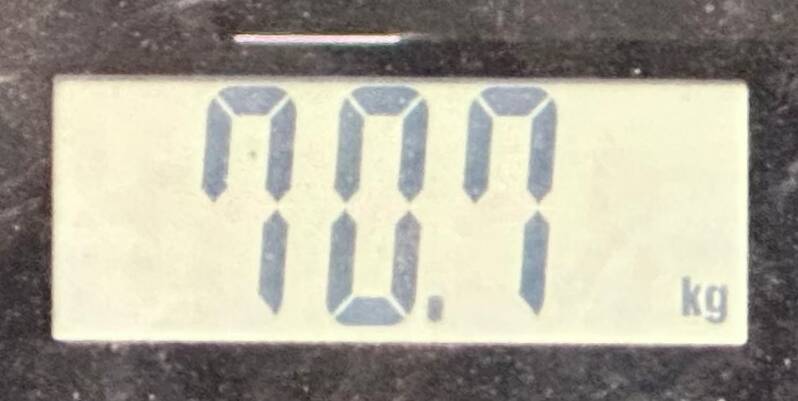Here is the blog post page of my CCBC. Follow my steps, let's start the journey!

25/09/2025 | The START of CCBC
This is the first day of my Changing Consumer Behaviour Challenge (CCBC). I set up a goal to lose my weight to 70kg within 1 month, which will be end on 25th October. Before I started my challenge, I went to platforms like YouTube to learn some basic knowledge of losing weight through simple exercise. My time and energy is limited because of I am studying and working at the same time. As a result, I decided to jog 3 times a week, while watching my daily diet. I recorded my weight in the morning which showed 71.3kg on the scale and I will keep recording my weight once a week. Before the challenge started, I thought about my internal motivation and found that health was not the only one, while self-esteem and self-efficacy also played an important role. This aligns with Maslow’s hierarchy of need, where both physical and psychological desires can be motivations (Hoyer et al., 2024). I transformed abstract desires into tangible SMART goals. I also informed several close friends to create a sense of social accountability that kept me motivated during the challenge.


26/09/2025 | Buying New Running Shoes: From Problem Recognition to a High-Effort Decision
On the second day of my challenge, I went to Nike and bought a pair of new running shoes after I went through its website for research where I compared cushioning, weight, and price. It is not only a shopping, but also a process of high-effort decision: I realised the problem of ankle pain from the old shoes then conducted information research and plan evaluation (Hoyer et al., 2024). Eventually, I used compensatory decision model, letting good cushioning complement the higher price. My motivation for jogging was even higher after the purchase, which aligned with the Maslow’s safety and self-actualisation needs (Hoyer et al., 2024).This was a high-effort decision-making stage. Firstly, I identified the problem, then I searched relevant information and evaluated other products. Finally, I made the purchase based on weighted attributes. One interesting thing is I experienced post-purchase satisfaction and even had a slight brand loyalty towards Nike after this. According to Hoyer et al. (2024), this satisfaction would create a reward cycle through positive reinforcement that encourage me more in the following activities.

29/09/2025 | YouTube Workouts: From Exposure–Attention–Comprehension to Mere Exposure
After bought the shoes, I started watching relevant YouTube videos. Such as the video called ‘Running For Weight Loss! | Run Tips For Losing Weight’ (Global Triathlon Network, 2021 January 2). Its cover page and title captured my attention, while the description image shaped my perceive and comprehend better, which mentioned in the ‘EAPC model’ (Hoyer et al., 2024). Besides, the more I watched an influencer, the more I believe him/her, it is a kind of illusory truth effect. I will make notes on these tutoring videos and try to apply them into practice. Watching related online videos is a mere exposure effect, where repeated getting in touch with some stimulus will increase people’s likelihood and trust even lacks of objective evidence (Hoyer, et al., 2024). This is similar to the availability heuristic, where people are easily judging the information based on their memories. Because of this, I set up a rule: do not watch more than 2 videos per week and try 1 technique immediately. This strategy linked exposure and action, which prevented me stuck in passive information consumption.

01/10/2025 | Running with Spuddy: Turning Social Influence into Motivation
At the beginning of October, I started bringing the dog Spuddy for jogging because I noticed that he was always wagging his tail when I went for a run. Besides, his excitement waiting also became one of my motivations. I identified this kind of interaction as a social influence from my closest ‘reference group’ (Hoyer et al., 2024). Spuddy has become my jogging partner, just like friends who cheer each other on in fitness app. When I felt lazy, I saw his disappointed look, so I put on my shoes and go out. Then I realised that normative influence does not only come from people, it can also come from emotional bonds. Jogging with lovely Spuddy perfectly showed the normative social influence. Although dogs cannot act like human, they have a similar psychological mechanism. Besides, bringing Spuddy to jog increased the opportunity and ability in the MAO model. His energetic encouraged me to jog further and faster, and the fixed route was good for forming a habit (Verplanken & Wood, 2006). Spuddy has unknowingly become my behavioral cue.


05/10/2025 | Birthday Dinner Guilt: From Cognitive Dissonance to Reframing
On October 5th, one day before my birthday, I have a dinner party with friends and ate a lot. The next few days, I noticed my weight increased again and instantly felt guilty. The post-purchase dissonance and the feeling about ‘did I do something wrong’ made me struggling, I even started finding some way to lose weight quickly in one week, which is a typical confirmation bias. After settling down, I reframed my mind and told myself one meal does not equal to failure. According to Gilbert and Wilson (2000), people often overestimate how long negative feelings last. As a result, I set up a rule that add one more jog if I have a big meal and it made me feeling back in control. This event reflected post-decision dissonance theory, where people feel exhausted when their personal behaviour conflicts with beliefs (Hoyer et al., 2024). Through reframing, I achieved cognitive realignment, telling myself 1 mistake does not deny the whole effort. Moreover, I adopted ‘If-Then’ plan that means if I ate too much, then I would jog one more time. It belongs to implementation intention that can transformed regrets into constructive motivation.

15/10/2025 | Exam Season Stress: Heuristics under Low Motivation and Opportunity
Final weeks came in October, while my exercising plan has been affected. Limited time and distraction were the biggest enemies, which is a typical low-MAO state (Hoyer, et al., 2024). The heuristics started influencing me, such as ordering takeout when I saw others did it and buying dessert if I saw it. I was making quick and cue-based decisions rather than rational analysis, which aligned with the peripheral route model (Petty and Cacioppo, 1986). Later, I realised this is not good for my challenge and forced myself to keep jogging after a certain period of studying, tried to fight back against low motivation with these micro rules (Cialdini, 2009). This week truly challenged my self-regulation. The peripheral route’s persuasion such as discount label, peer behaviour and sense of tiring controlled my behaviour. I realised my ego depletion is reducing my cognitive control, making me easier to attract by low-effort heuristics. As a result, I set up a positive reinforcement mechanism that allows myself played soccer video game for a while after each jog. This reward structure rebalanced the relationship between effort and satisfaction.
18/10/2025 | Impulse Buying at Night: A Wake-Up Moment about Anchoring
On the night of October 18th, after finishing a tutorial at late night, I went back home but my friend invited me to have a dessert with him. The physical fatigue and hunger drove me to the dessert shop and attracted by the shining package and the limited discount. An anchoring effect made me feel like I would be missing out if I did not buy (Hoyer, et al., 2024). However, my rational stopped me and pulled me back, I realised that it was just emotion but not hunger. Finally, I chose fruit and yogurt instead. That moment taught me a lesson that self-control is not suppression but it redefines what counts as a reward. This is a typical anchoring effect example: consumers usually rely too much on the initial information such as ‘original price’ during their purchase (Hoyer et al., 2024). The good-looking package and ‘limited time discount’ sticker also increased scarcity and emotional appeal. After recognising these triggers, I changed my mind into central-route processing and paused my mind before impulse buying to ask myself: is that real hunger or just emotional reflection.
25/10/2025 | The END of CCBC
On October 25th, I finished this challenge with my weight at 70.7kg. Unfortunately, I did not achieve the goal I set to lose weight until 70kg. At the beginning, I noticed weight losing very slow, so I adjusted the plan and enhanced self-control. As a result, in the last 2 weeks of the challenge, there was a significant drop in my weight. Although I failed in achieving the target, I still learned a lot from the challenge and experienced how these consumer behaviour concepts applied into our daily life. Moreover, even the challenge is already finished, I kept exercising with the dog to live in healthier life. Looking back the whole journey, I realised that the success of behaviour change was not linear. The small fluctuations showed what is post-purchase learning, which is the feedback can continually reshape future expectations (Hoyer et al., 2024). I preferred enjoying the process rather than sticked into the goal number. By integrating theories such as MAO, EAPC and social influence, I had a cleared identification of my psychological patterns. The challenge also proved that habitual repetition and self-reinforcement have a much stronger power than the external pressure. I obtained a healthier attitude and became a more rational behaviour consumer although I failed reaching the losing weight goal.

Weekly Weigh-Ins: Positive Reinforcement through Learning
I recorded every jog in a fitness app and weighed myself on every Thursday morning during the challenge. On October 16th, I noticed that I had lost 0.5kg and felt happy all day. This is actually operant conditioning in action, where the reward of losing weight progress reinforced the behaviour of consistency (Hoyer et al., 2024). At the beginning stage, when my weight kept at one level, I changed the plan and avoided upsetting myself. Instead, I reduced the difficulty and kept consistency. I have learned to enjoy the process rather than fearing the scale during this reinforcement-adjustment-reinforcement cycle.

02/10/2025

09/10/2025

16/10/2025
Records of Jogging: Using Fitness App
I recorded my every jog in a fitness app on my phone and here are the original mandarin version and translated version.






Create Your Own Website With Webador